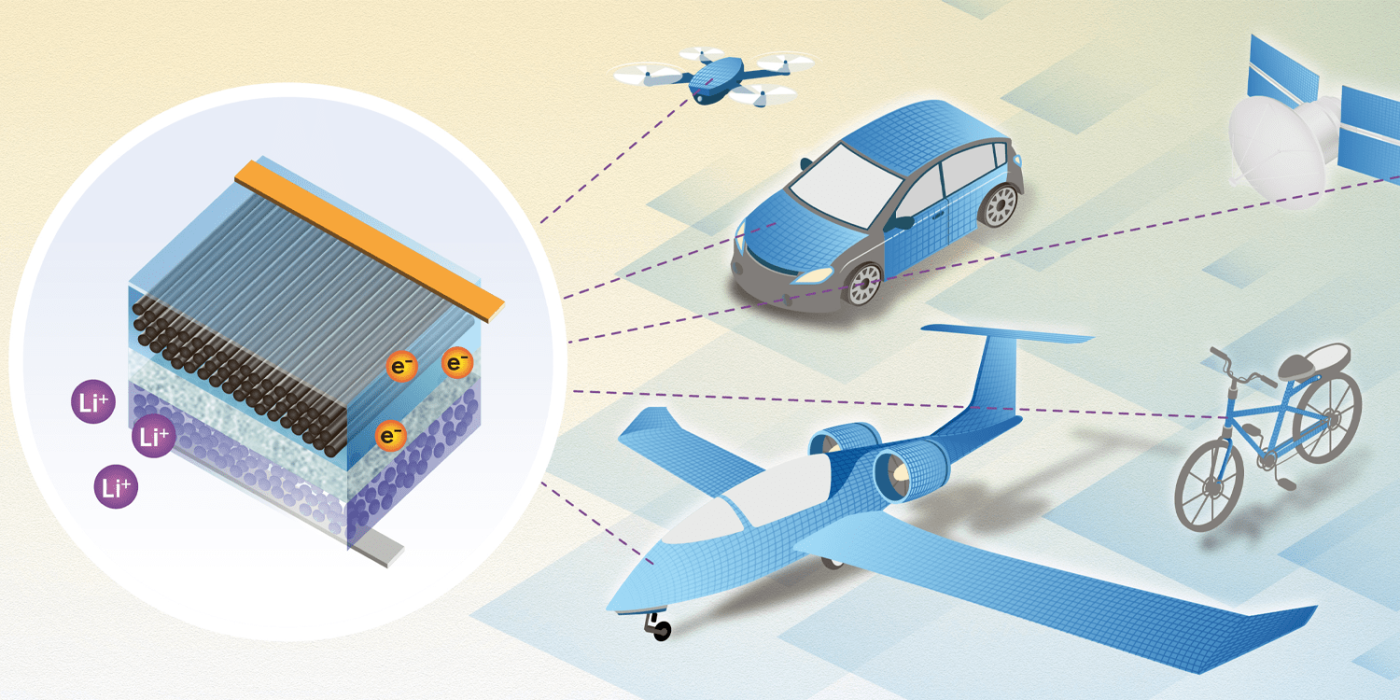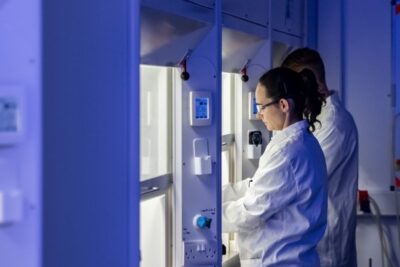Research breakthrough with structural battery
The battery contains carbon fibres that serve as both the electrode and conductor, as well as being part of load-bearing structural material at the same time. The Swedish researchers reported the first successes with this approach back in 2018.
A “structural battery” is the term used to describe batteries that act as both an energy source and as part of the structure, for example in a car body. The main advantage is that by taking on load-bearing tasks, the battery’s weight is relativised. Initially, the new battery could be used in smartphones, laptops or electric bicycles. In the longer term, however, according to those involved in the project, it could also be used in electric cars, aircraft or satellites.
The project is being jointly carried out by Chalmers University of Technology and KTH Royal Institute of Technology and is funded by the European Commission’s Clean Sky II research programme and the US Air Force. On the current state of research, Chalmers University reports that the battery has an energy density of 24 Wh/kg and stiffness of 25 GPa.
Leif Asp, professor at Chalmers and leader of the project says that “Previous attempts to make structural batteries have resulted in cells with either good mechanical properties, or good electrical properties. But here, using carbon fibre, we have succeeded in designing a structural battery with both competitive energy storage capacity and rigidity.”
The novel battery is constructed using carbon fibre as the negative electrode and an aluminium foil coated with lithium iron phosphate as the positive electrode. The carbon fibre acts as a host for the lithium and thus stores energy. The researchers say that because the carbon fibre also conducts electrons, copper and silver conductors can be eliminated, which further reduces the battery’s weight. In their announcement about the breakthrough, the researchers explain that the carbon fibre and the aluminium foil contribute to the mechanical properties of the structural battery. The two electrode materials are kept separate by a glass fibre fabric in a structural electrolyte matrix. The task of the electrolyte is to transport the lithium ions between the two electrodes of the battery, but also to transfer the mechanical loads between the carbon fibres and other parts.
According to those involved in the project, there is a lot more potential with this approach and indeed, a new project funded by the Swedish Space Agency is already underway whereby the performance of the structural battery is to be increased even further. Here, the aluminium foil is replaced by carbon fibre as the load-bearing material in the positive electrode, which increases both the stiffness and the energy density. The glass-fibre separator will be replaced by an ultra-thin variant, which will enable a significantly greater effect, which should also mean faster charging cycles.
The new project should be completed within two years. Leif Asp, who is also leading this project, estimates that the researchers could achieve an energy density of 75 Wh/kg and a stiffness of 75 GPa. This would make the battery about as strong as aluminium but comparatively much lighter in weight. “The next generation structural battery has fantastic potential. If you look at consumer technology, it could be quite possible within a few years to manufacture smartphones, laptops or electric bicycles that weigh half as much as today and are much more compact,” says Leif Asp. In the longer term, he says, it is quite conceivable that electric cars, electric planes and satellites will be designed and powered by structural batteries.
With reporting by Cora Werwitzke





0 Comments